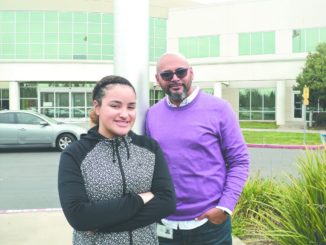
2024 California Women’s Well-Being Index offers insight into gender equity and other issues
By Whip Villarreal
The 2024 California Women’s Well-Being Index was released at an online event featuring a data overview and expert panel on Sept. 4. This latest version of the data tool is the first update to the report since the COVID-19 crisis, serving as a tool to measure and understand how women are faring in the Golden State, county-by-county.
The California Commission on the Status of Women and Girls (CCSWG) and the California Budget & Policy Center partnered to develop this third update to the Women’s Well Being Index which seeks to highlight disaggregated gender-based data along 30 different indicators, offering insight into equity barriers in California. The interactive tool aims to provide vital information to inform the public and policymakers about the contextual factors and implications of the data to generate informed and impactful policy solutions that promote gender equity in California.
“Data is always the first step in building solutions to close the gaps and address inequality,” says CCSWG Interim Executive Director Darcy Totten. “
“Our hope moving forward is once counties have access to this data, we can start conversations about how to work collaboratively in mobilizing on-the-ground service providers and community-based organizations while working on policy solutions for long-term structural changes that address inequities.”
Darcy Totten, Interim Executive Director, California Commission on the Status of Women and Girls
“Our hope moving forward is once counties have access to this data, we can start conversations about how to work collaboratively in mobilizing on-the-ground service providers and community-based organizations while working on policy solutions for long-term structural changes that address inequities. This online interactive tool can show local leaders and state government what structures or policies need to change to alleviate persistent challenges as well as what is working well for women and girls in California.”
The report comprises five key “dimensions” consisting of six indicators covering health, personal safety, employment and earnings, economic security, and political empowerment. For example, in the health dimension, its indicators are health status, healthcare coverage, the proportion of women who delay medical and prenatal care, mental health, and life expectancy.
The data sampled in the report is sourced from surveys, government agencies and organizations including the U.S. Census Bureau’s American Community Survey, the California Department of Justice, and the California Department of Public Health. The researchers then analyze the data, assign a score based on their methodology, and break it down by county. The data can also be broken down by race and gender categories to highlight the disparities across the state.
“This is the third iteration of the report, and it took a year to compile all of the data and revisit the categories to analyze their relevance,” said Laura Pryor, research director at the California Budget and Policy Center. “It was decided that two indicators in the report would change. One indicator changed from commuter time to digital equity, which represents how many women have access to high-speed internet and computers. The other category that was swapped out was the high school indicator for the proportion of women with a four-year college degree. Our research found that during the pandemic, women without a degree were the first to lose their jobs.”
Pryor added that despite decades of progress in many areas for women in California, significant disparities persist. Issues such as racism, the wage gap, access to economic security, and representation in elected positions remain key issues women continue to contend with in the state known for its progressive and liberal culture.
The report has been released in four-year increments since 2016 to support researchers in compiling a sufficient sample size, allowing for reliable data aggregation across all 58 counties and minimizing redundancies.
For more information about the report, visit the California Commission on the Status of Women and Girls Website at women.ca.gov/womens-well-being-index.



